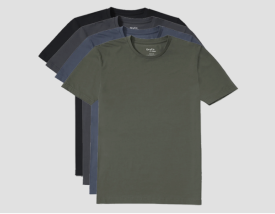Anxious sweating happens to all of us, but some are affected more than others. The nervousness, fear, or stress that causes anxiety triggers a rush of activity from our bodies. In this state, we activate adrenaline, cortisol, and other stress hormones. The heart rate jumps up, body temperature rises, muscles tense, and sweat starts to pour out.
Unlike sweat from physical activity, which releases from the eccrine glands, anxious sweating comes from the apocrine glands. These glands are larger and release a thicker sweat full of fats and nutrients. As a result, nervous sweating tends to smell different and stronger. When activated by stress, the apocrine glands produce ~3000% more perspiration than at rest. This large release amplifies this effect further.
To prevent this smelly and abundant anxious sweat, you need to learn to master your anxiety. While none of us are yogis who can hope to achieve perfect oneness and control over the self, anyone can use calming techniques to better manage anxiety. One of the simplest and most effective methods is to use mindful breathing techniques.
Benefits of Mindful Breathing Techniques on Anxiety
Using mindful breathing exercises has a relaxing effect on your mind, body, and internal systems. Using these techniques helps to reverse or decrease the anxious response. As the breathing takes effect your body stops producing stress hormones and the sweat glands stop perspiring.
The sooner you begin mindful breathing, the sooner you stop sweating. But it’s not just a reactive technique. If you are prone to anxious sweating, consider making mindful breathing exercises part of your daily routine.
Practicing breathing exercises regularly helps you better control anxiety and your body’s response to stress triggers. Train your body to remain calm, and you will soon find that your fight or flight response becomes less easily triggered. Small stressors are less likely to cause sweat, and you will be better able to calm yourself if you do begin nervous sweating.
Mindful Breathing Techniques
We put together a few calming breathing exercises that anyone can do. Of course, the more you practice, the more effective they become.
Deep Breathing
For all breathing techniques, it’s important to learn how to draw breath deeply, into your diaphragm. Also known as “belly breathing” this practice engages the diaphragm, abs, and stomach with each breath.
As you inhale in, the belly fills. As you exhale, the belly goes in. This deep breathing fills your lungs efficiently with oxygen, lowering heart rate, blood pressure, and relieving stress.
Lion’s Breath
Colorfully named lion’s breath comes from the pranayama yoga practice. Pranayama is a series of yogic breathing patterns used for physical and mental wellness. Lion’s breath is a simple, but effective calming breathing pattern.
- Sit upright in a comfortable position, with your hands on your knees.
- Inhale deeply through your nose
- Exhale strongly so that your breath makes a “ha” sound. As you finish the exhale, stick out your tongue as far downwards as you can without tilting your head.
- Repeat four to six times.
Square Breathing
Square breathing is a four-step breathing pattern with each step taking four seconds. As with lion’s breath, all of these techniques involve inhaling through the nose and exhaling through the mouth.
- Inhale four seconds, drawing oxygen into the diaphragm.
- Hold the breath for four seconds
- Exhale four seconds, emptying the lungs.
- Rest four seconds.
Continue to repeat until you are calm.
4-7-8 Breathing
Often used as a sleep aid, this pattern can offer great relaxation. Like square breathing, it follows a pattern using timed breaths.
- Inhale fully into the belly over four seconds.
- Hold the breath for seven seconds
- Exhale for eight seconds, fully emptying your lungs.
Repeat as necessary. If it becomes uncomfortable you can return to normal breathing for a few seconds between 4-7-8 breaths.
Comfort, Quiet, and Calm
To get the most calming results from mindful breathing it is best to practice in a space that is comfortable and quiet. While the idea of yogic breathing often leaves us visualizing someone sitting cross-legged on the ground, it’s more important to find a place to sit or lie down that prioritizes breathing and comfort. You can get just as much from sitting in a chair with good posture as from lying flat on your back.
As well, it’s best to wear comfortable clothing. At Neat, our shirts offer ideal comfort as well as moisture-wicking fabric to help you stay dry and actively remove sweat while you calm your body. Shop sweat-wicking undershirts, tees, and polos today!







